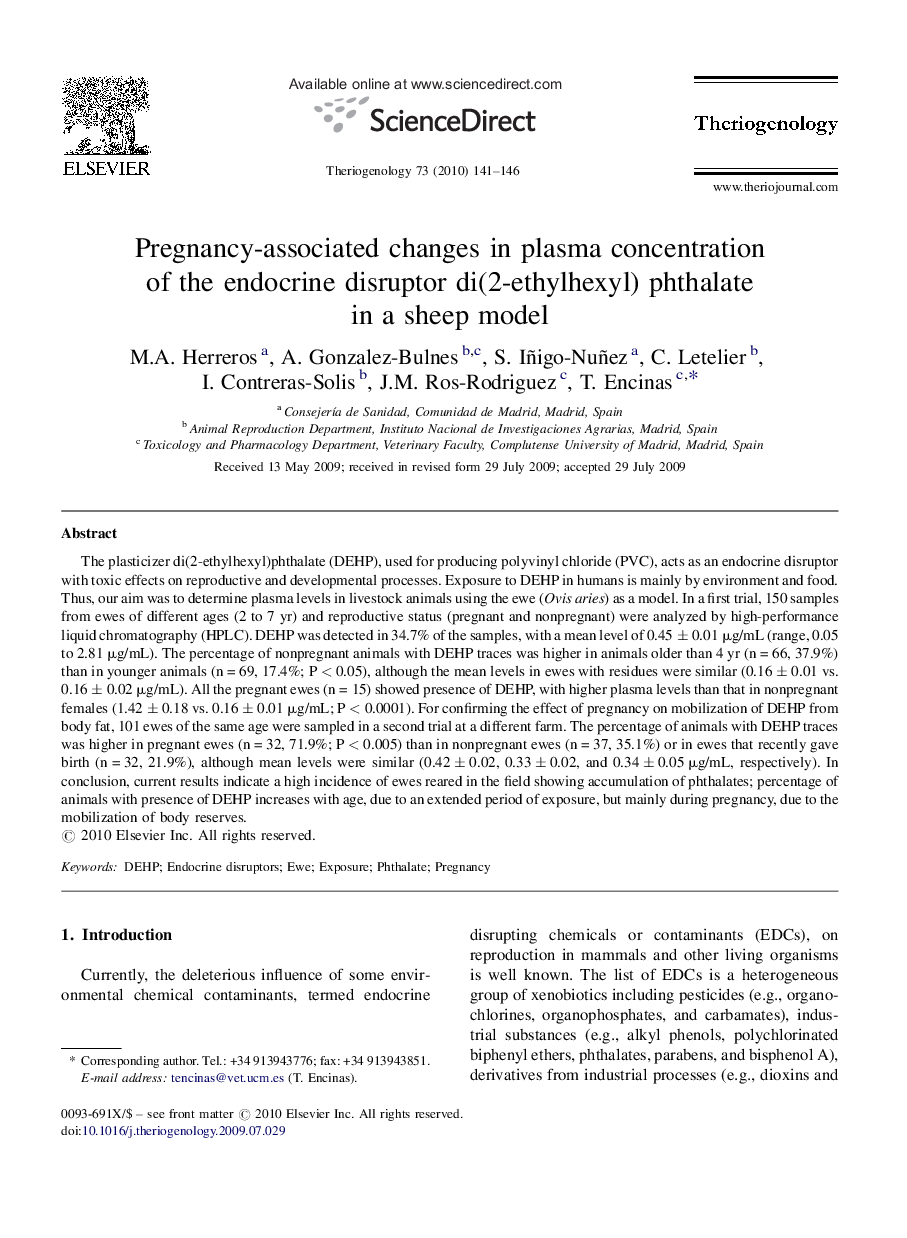| کد مقاله | کد نشریه | سال انتشار | مقاله انگلیسی | نسخه تمام متن |
|---|---|---|---|---|
| 2095922 | 1082143 | 2010 | 6 صفحه PDF | دانلود رایگان |

The plasticizer di(2-ethylhexyl)phthalate (DEHP), used for producing polyvinyl chloride (PVC), acts as an endocrine disruptor with toxic effects on reproductive and developmental processes. Exposure to DEHP in humans is mainly by environment and food. Thus, our aim was to determine plasma levels in livestock animals using the ewe (Ovis aries) as a model. In a first trial, 150 samples from ewes of different ages (2 to 7 yr) and reproductive status (pregnant and nonpregnant) were analyzed by high-performance liquid chromatography (HPLC). DEHP was detected in 34.7% of the samples, with a mean level of 0.45 ± 0.01 μg/mL (range, 0.05 to 2.81 μg/mL). The percentage of nonpregnant animals with DEHP traces was higher in animals older than 4 yr (n = 66, 37.9%) than in younger animals (n = 69, 17.4%; P < 0.05), although the mean levels in ewes with residues were similar (0.16 ± 0.01 vs. 0.16 ± 0.02 μg/mL). All the pregnant ewes (n = 15) showed presence of DEHP, with higher plasma levels than that in nonpregnant females (1.42 ± 0.18 vs. 0.16 ± 0.01 μg/mL; P < 0.0001). For confirming the effect of pregnancy on mobilization of DEHP from body fat, 101 ewes of the same age were sampled in a second trial at a different farm. The percentage of animals with DEHP traces was higher in pregnant ewes (n = 32, 71.9%; P < 0.005) than in nonpregnant ewes (n = 37, 35.1%) or in ewes that recently gave birth (n = 32, 21.9%), although mean levels were similar (0.42 ± 0.02, 0.33 ± 0.02, and 0.34 ± 0.05 μg/mL, respectively). In conclusion, current results indicate a high incidence of ewes reared in the field showing accumulation of phthalates; percentage of animals with presence of DEHP increases with age, due to an extended period of exposure, but mainly during pregnancy, due to the mobilization of body reserves.
Journal: Theriogenology - Volume 73, Issue 2, 15 January 2010, Pages 141–146